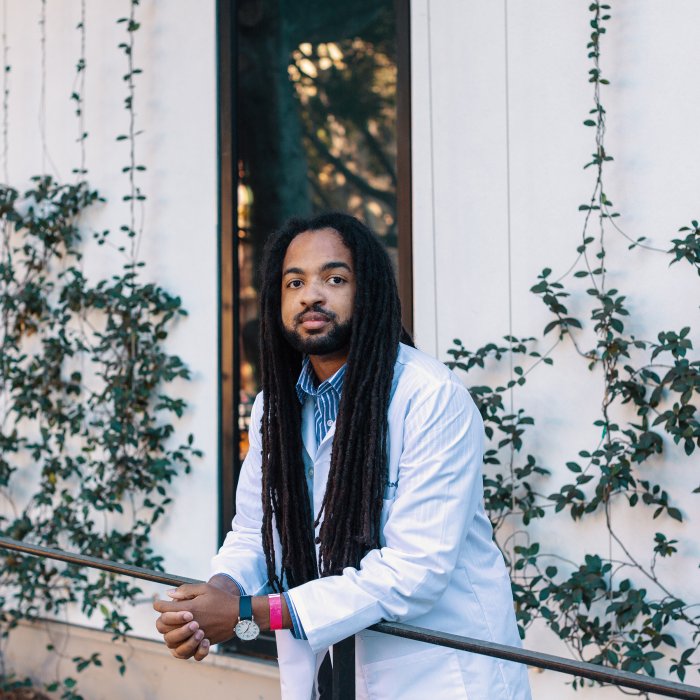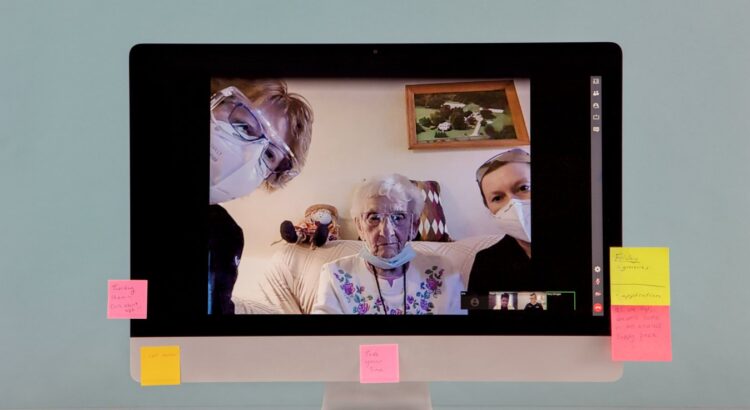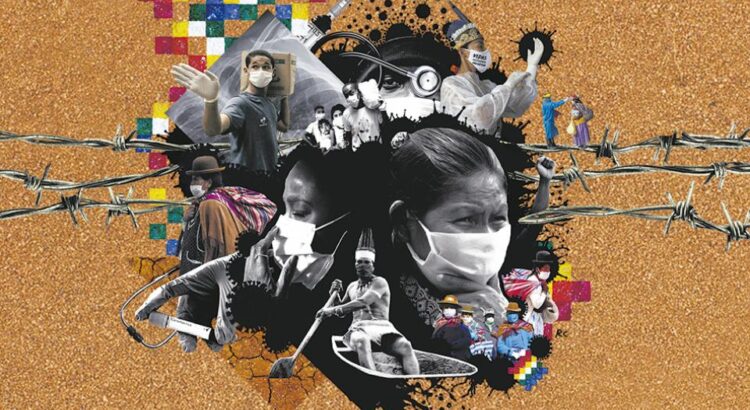How U.S. Medical Schools Are Training a Post-Pandemic Generation of Doctors
In February 2019, the Kaiser Permanente health system announced a new kind of medical school. The school would be built “from the ground up” to prepare students for the complexities of the U.S. medical system. The curriculum would emphasize cultural competency, patient and provider well-being, and the elimination of socioeconomic disparities in the medical system. Students would see patients right away, and hands-on learning would replace many lectures. What’s more, the first five graduating classes would pay nothing to attend; Kaiser hoped this would attract a student body more diverse than the typical U.S. medical school.
“The school will help shape the future of medical education,” promised Kaiser CEO Bernard Tyson, who died unexpectedly, reportedly of a heart attack, about nine months after the announcement.
That future felt a good deal more urgent by the time the Kaiser Permanente Bernard J. Tyson School of Medicine opened its doors in Pasadena, Calif., in July. The COVID-19 pandemic had put a hold on almost every facet of “normal” life, and the medical system was scrambling to treat millions of patients with a new and terrifying disease, a disproportionate number of them Black and brown. The streets were filled with people protesting police brutality and racism, as a nation that had long overslept awoke to the disparities woven into almost every American institution. “Our country doesn’t just have a pandemic; it also has a renewed recognition of centuries of racism,” says Kaiser’s founding dean Dr. Mark Schuster. “We need to make sure that our students understand our history.”
Kaiser isn’t alone there, of course. Medical schools all over the world have had to adjust on the fly during the pandemic, in ways both practical and ideological. First, schools had to figure out how to remotely train students in skills taught hands-on before lockdowns. Then, in the U.S., schools were also forced to grapple with their roles in a health care system that often fails to keep Black and brown patients well. That meant learning how to produce doctors who could help chip away at those disparities moving forward. With no warning and no instruction manual, medical schools are figuring out how to train a generation of post-pandemic doctors for a world still taking shape.
The foundations of the American medical education system haven’t changed much for decades. The first two years are a mad rush to attend lectures and memorize as much information as humanly possible, since students usually take the first part of their medical licensing exam after their second year of school. In their third year, students start clinical rotations in hospitals, then spend most of their fourth trying to find a match for their next phase of training: medical residency.
The coronavirus pandemic upended all of that last spring. Classes could no longer happen in person, let alone in large lecture halls. Students couldn’t go to hospitals for training, since facilities needed to conserve resources and personal protective equipment. And travel restrictions made it difficult for fourth-year students to do “audition rotations” at hospitals where they hoped to complete residency. Fiona Chen, who was in her third year at Brown University’s Warren Alpert Medical School, went from spending around 40 hours a week in the clinic to watching one Zoom lecture a week and volunteering for a coronavirus information hotline. “We basically put a pause on our entire lives,” she says.
They couldn’t stay paused forever. Schools had no choice but to adapt, which, for many, opened the door to overdue changes—changes that are coming in handy with COVID-19 again surging and new lockdowns being enacted.
“A lot of the inertia and conventions of medicine are being broken down,” says Dr. William Jeffries, vice dean for medical education at the Geisinger Commonwealth School of Medicine in Pennsylvania. “Advances in medical education are now happening at light speed.”
Though some students returned to the classroom later in the year, step one last spring was bringing traditional classes online—a fairly easy task for most schools in the developed world, though less so for schools in places like Southeast Asia and Africa, where Internet access is spottier. In developed nations, at least, the shift enabled schools to look critically at the way they were teaching before the pandemic. Kaiser’s preexisting plan to teach students anatomy using virtual reality simulators, rather than cadavers, proved fortuitous. Imperial College London gave students access to a video library of old patient interviews and exams. At New York University’s Grossman School of Medicine, professors began prerecording their lectures so students could watch in advance and use class time for livelier discussion. “Lectures have been fading as a useful didactic model for 10 years, but we continue to use them,” says Dr. Steven Abramson, NYU’s vice dean for education, faculty and academic affairs. The pandemic may finally catalyze lasting change.
When third- and fourth-year students were yanked from hospitals last spring, many schools pivoted to telemedicine appointments. (This wasn’t unique to medical schools; remote visits surged across the health care system.) After the new academic year started this past summer, third-year students at Geisinger spent the first 10 weeks learning how to take patient assessments and develop treatment plans over Zoom. “When clinical care changes, medical student education follows,” says Dr. Alison Whelan, chief medical education officer at the Association of American Medical Colleges (AAMC).
That required teaching students “webside” (as opposed to bedside) manner, to prepare them for a clinical practice likely to be far more virtual than that of their predecessors. “If you’re not shaking hands, how do you make that initial connection [with a patient]?” Whelan asks. Students have also been honing the skills needed to perform the behind-the-scenes work that goes into a telemedicine appointment—like how to handle patient privacy when a spouse wanders into the room, or what to do when a patient can’t figure out how to work the web platform, Whelan says.
Still, you can’t take an EKG or draw blood virtually. To continue teaching skills like these when students were sent home, Geisinger built an “e-ICU” that allows students to see what’s going on in hospital rooms, and remotely do the sort of trainee doctor work they’d have done in person before the pandemic. Through a webcam, they can ask resident doctors on duty to perform certain exams or tests, as if they’re actually at the patient’s bedside, and then get immediate feedback from the resident.
The model worked so well that Geisinger plans to continue the e-ICU and the school’s broader telemedicine training even as students return to regular clinical work, Jeffries says. Doctors who are digitally literate and comfortable using telemedicine could help expand access to care in the future, he says. Programs like the e-ICU could also help connect doctors in small community clinics with specialists who may not be available locally. “I come from a small town in the middle of nowhere. We don’t even have a post office,” says Dr. Cass Lippold, a critical-care fellow at Geisinger who oversaw the e-ICU program. “This will be great to help those people who don’t have access to a hospital.”
Programs like these could also improve doctors’ work-life balance. “If you’re a physician with a couple young kids at home, telemedicine has really opened an opportunity to work from home a couple days a week and still see patients,” says NYU’s Abramson. Jeffries notes that moving classes online could also make it easier for prospective doctors with physical or learning disabilities to participate, since they could tailor their environment to fit their needs.

The shift to online learning was a logistical undertaking, but the harder work may be producing doctors who are better equipped to take on the systemic issues exposed by the pandemic, like race-based health disparities, uneven access to care and ballooning treatment costs.
At Kaiser Permanente, that preparation began before students even started classes last summer. The entire class was invited to a virtual check-in to discuss the racial-justice movement, and the conversation hasn’t stopped since, says 26-year-old first-year student Cruz Riley, who has a special interest in Black maternal health. “You would think [students] would be talking about what we watched on Netflix,” he says. “But [the students] are always talking about systematic inequality, and we are always bouncing ideas off each other.”
Even at a school that proudly states its dedication to diversity and has woven race and racism into its curriculum, the conversations haven’t been seamless. In December, Kaiser physician and medical school instructor Dr. Aysha Khoury, who is Black, went viral on Twitter when she posted that the school had suspended her from teaching in August after she led a frank, emotional discussion about racial disparities and bias in health care. Even after outcry from students and fellow physicians, Khoury says she has not been reinstated to her faculty position or told which policy the school thinks she violated. “I wish [administrators] understood that it is O.K. for Black people, people from marginalized groups, to share their stories,” Khoury says. “If we’re truly going to change health care … they have to create a way and space to move forward together.”
Representatives from Kaiser did not comment on details of the investigation but said the school values diversity and Khoury was not penalized for talking about her personal experiences or for discussing anti-racism in medicine—a topic spokespeople maintained is a cornerstone of Kaiser’s curriculum.
Kaiser also requires first-year students to take a class on mental health and overcoming stress, and to visit an on-campus psychologist three times during their first semester. Those services, available free of charge throughout their medical education, are part of a program Kaiser implemented to counter high rates of burnout and mental distress among medical students: studies estimate more than 25% worldwide show signs of depression, and about 10% of suicidal thinking. But it has also provided valuable support as students of color do the emotional labor of living through constant reminders of racism in America, says 25-year-old first-year student Emilia Zevallos-Roberts, who was born in Ecuador.
Courses on health disparities and racism in medicine aren’t new in the U.S., but they also haven’t been terribly effective. Racism is still a problem in medical schools, as well as the wider medical system. A 2020 study found that about 25% of students who identify as Black, Hispanic/Latinx or American Indian/Alaska Native experienced race-based discrimination during medical education. That doesn’t stop after graduation. “There were so many comments that I had to endure in my undergraduate years, in my medical school years,” Dr. Tsion Firew, an emergency-medicine physician at New York City’s Columbia University, who is Black, told TIME last summer. “When I walk into my hospital, it’s not [diverse] like New York City. The second you walk into the hospital, you are reminded that you’re not part of the majority.”
Medicine and medical education remain very white fields in America. In 2019, out of nearly 38,500 medical school professors in the U.S., 755 (2%) identified as Black, around 1,000 (2.6%) identified as Hispanic or Latino, and just 37 (0.01%) identified as American Indian or Alaska Native, according to AAMC data. More than 29,000, or 75%, identified as white. For context, about 60% of the total U.S. population identifies as white, while about 12% identify as Black, 18% as Hispanic, 5.6% as Asian and less than 1% as American Indian/Alaska Native, according to data from the U.S. Census Bureau’s American Community Survey.
Given that dynamic, it’s not hard to understand why many schools haven’t historically done a good job teaching concepts like cultural competency (the ability to connect with and treat patients from all backgrounds) and social determinants of health (the myriad ways socioeconomic factors affect a person’s well-being). Many also fail to correct (and in some cases even perpetuate) racist and incorrect stereotypes about biological differences between Black and white patients. One 2016 study found that, out of about 400 medical students and residents surveyed in the U.S., half held false beliefs, such as that Black people have a higher pain tolerance or physically thicker skin than white people. If students are steeped in these incorrect stereotypes, rather than very real social determinants of health, they may contribute to a system of racially insensitive, and potentially harmful, medical care.
Many schools were already working to fix that before the pandemic, but mainstream conversations about inequality and racism have hastened the process. Chen, currently a fourth-year student at Brown, says she’s noticed that race and social factors now come up when discussing every patient case, whereas before they were often relegated to stand-alone lectures or lessons. Tian Mauer, a third-year student at Geisinger, has noticed the same thing. And for schools across the U.S., the AAMC has guidelines for teaching equity, diversity and inclusion in medicine. “COVID has really highlighted for some for whom it had not yet clicked that the social determinants of health are really critical,” Whelan says.
Of course, it will take more than a few lectures to address centuries-old disparities in medical care, particularly because systemic racism has so many tendrils. It’s not enough to train physicians on implicit bias and cultural sensitivity when Black and Hispanic Americans’ health suffers due to poverty and segregation built up over centuries—or when many people from these communities can’t afford to become doctors themselves, perpetuating cycles of mistrust in a heavily white medical system.
At most medical schools, the student body looks a lot like the faculty. Together, Black and Hispanic students made up less than 15% of the national medical student population during the 2019–2020 school year, AAMC data show. People who identified as American Indian/Alaska Native made up just 0.2%. Wealth disparities go a long way to explaining why: medical school tuition and fees can easily top $60,000 per year, and the average new doctor graduates with about $200,000 in debt, according to AAMC data.
Before the pandemic, a small but growing group of schools were trying out a way to fix that: offering free or heavily discounted tuition. NYU permanently waived its $55,000 annual tuition in 2018. Geisinger now offers free tuition for students who agree to practice within its health system. Kaiser’s free tuition offer will go to its first five graduating classes.
The pandemic may accelerate conversations about affordability, especially as financial stress stretches on. Dr. Steven Scheinman, the dean at Geisinger, says a stronger reliance on remote learning could push the school’s tuition down over time. NYU and about a dozen other U.S. medical schools are also part of a consortium studying how an accelerated medical school schedule—three years instead of four—affects learning, student finances and licensing and placement for new doctors. Cutting a year of school would get doctors out into the field faster, saving them a year of expenses. More than a dozen U.S. medical schools, including NYU and each of the four medical schools in Massachusetts, along with many in the U.K., like the University of Cambridge and Oxford University, allowed their students to graduate early last spring to help with pandemic response. In a worst-case scenario, the ongoing spike in cases and hospitalizations could necessitate something similar.The U.S. medical school system also has missed opportunities presented by COVID-19. For example, relatively few schools changed their admission requirements in ways that could have made life easier for applicants. To apply for most U.S. medical schools, students still had to take a $320 hours-long standardized exam called the Medical College Admission Test (MCAT). A grassroots group called Students for Ethical Admissions called on schools to waive that requirement, citing the risks of disease spread that come with sitting for hours in an exam room with strangers, but only a handful of schools, including Stanford and the University of Minnesota, did so. The AAMC, which administers the test, maintains that all students should still take the MCAT.
And not all schools have used the moment to update their curricula, nor done a seamless job of bringing learning online. A study of U.K. medical students found that the majority experienced some disruption to their normal training. “This is a detriment to my education, sitting in my bedroom trying to focus when my parents are home working,” agrees 23-year-old Elli Warsh, who is in a nursing program at New Jersey’s Rutgers University. Warsh and her classmates were pulled out of the hospital from March to July and didn’t see any patients for those months. They had to practice skills like full-body assessments on family members or roommates; some students who lived alone used teddy bears. Now, Warsh says, she has no idea if her skills will be on par with previous new nurses when she graduates in May.
Those are real fears, particularly for students who aren’t attending big-name, richly endowed medical schools that were able to adjust on the fly, and for students shouldering burdens like financial distress and childcare during the pandemic. Time will tell how they fare when their residency placements come around. In the meantime, students like Zevallos-Roberts, from Kaiser’s School of Medicine, find optimism in the disruption. “Although the pandemic is obviously devastating,” Zevallos-Roberts says, “I’m hoping that the energy and momentum for change that we’re seeing now, that we’re able to bring that forward when we’re graduating three years from now.”
Update, Jan. 7, 2021
This story has been updated to include information about Dr. Aysha Khoury’s suspension from Kaiser Permanente’s medical school.






 Users Today : 72
Users Today : 72 Total Users : 35403045
Total Users : 35403045 Views Today : 84
Views Today : 84 Total views : 3332257
Total views : 3332257